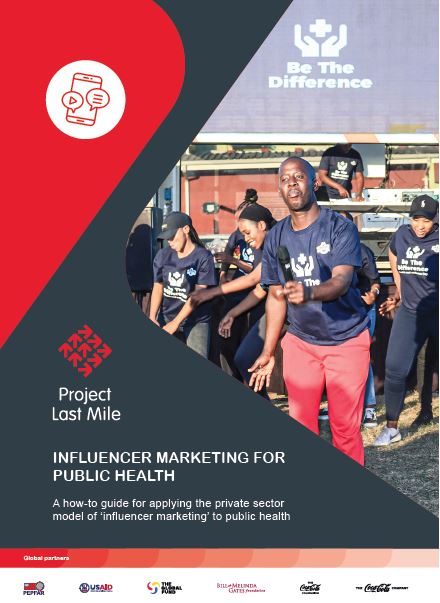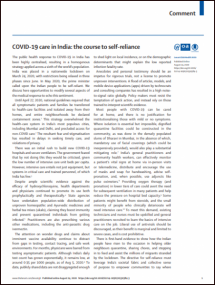Influencer Marketing Guide for Public Health: A how-to guide for applying the private sector model of ‘influencer marketing’ to public health
Project Last Mile (PLM) recently released a resource for public health communicators and social behavior change practitioners – the INFLUENCER MARKETING FOR PUBLIC HEALTH: A how-to guide for applying the private sector model of ‘influencer marketing’ to public health.
The guide is based on PLM’s experience of conducting public health campaigns with different influencers, from faith-based leaders to TikTok and radio DJs, as well as micro and nano social media influencers. PLM applied a private sector approach to influencer marketing to these public health campaigns in South Africa and Eswatini during the COVID-19 pandemic to drive COVID-19 vaccinations.
Many successful consumer brands such as Coca-Cola, Nike, and Microsoft have used influencers to market their products. They have been doing so for years, which has led to influencer marketing becoming a critical tool in companies’ marketing wheelhouses.
Influencer engagement through community leaders or social media influencers is also commonly used in public health to promote health service uptake and behavior change. To date, while influencer marketing has been leveraged to support public health outcomes in certain settings, there are further learnings that can be leveraged from the private sector to strengthen the impact of these efforts within the public health sector.
Though commercial businesses and brands nowadays typically use influencers on digital channels such as social media, this guide takes a broader view of the term ‘influencer’ and explains when, why, and how best to use a private sector approach to influencer marketing more broadly, in the public health sector.
Last modified: December 28, 2023
Language: English
Source: Project Last Mile
Year of Publication: 2023


